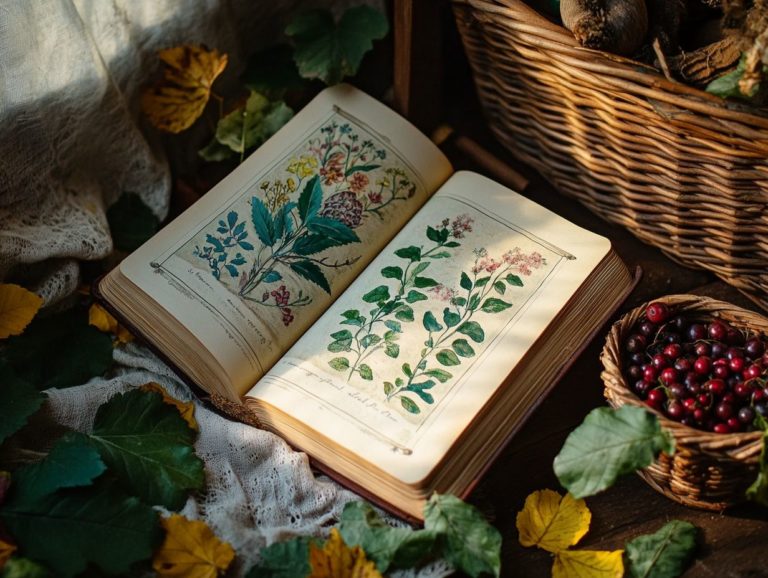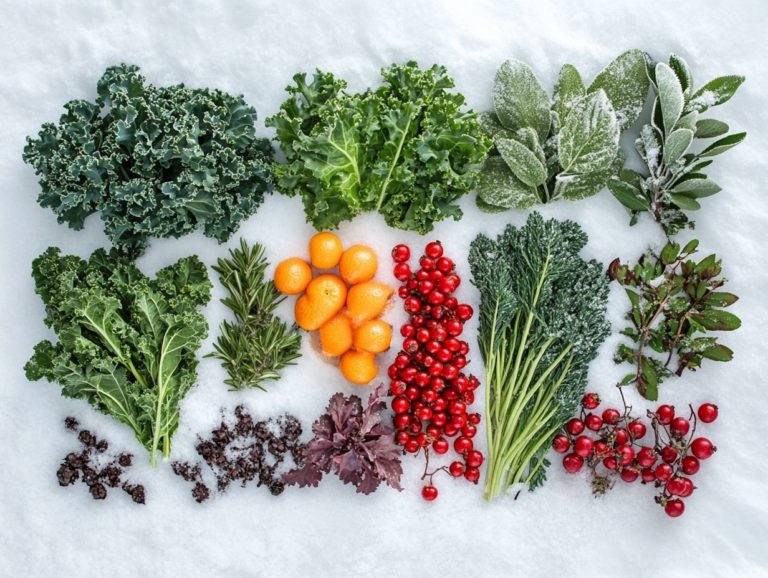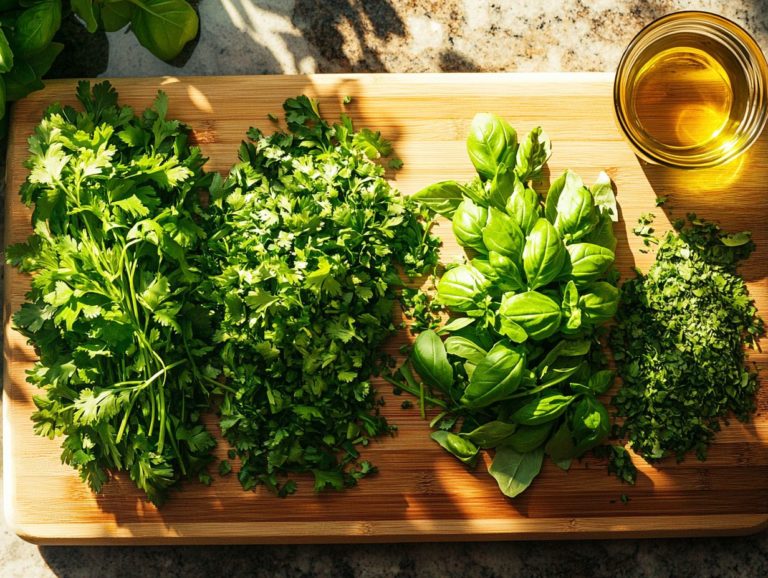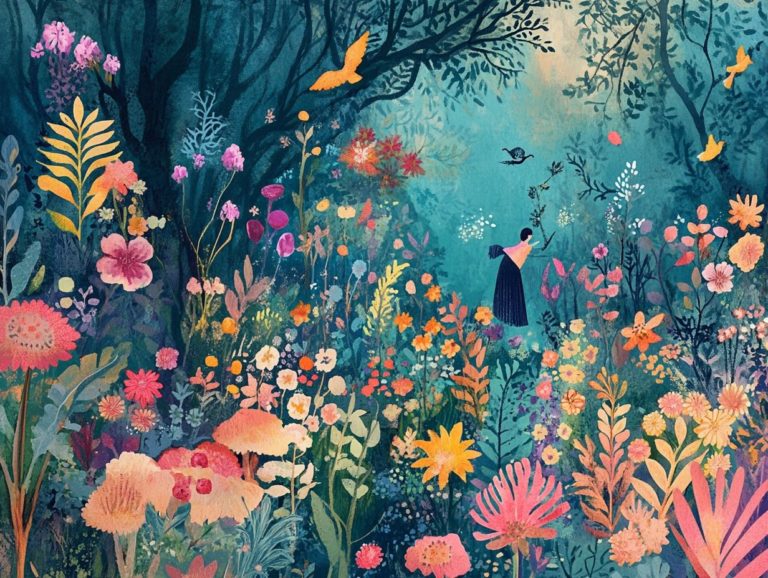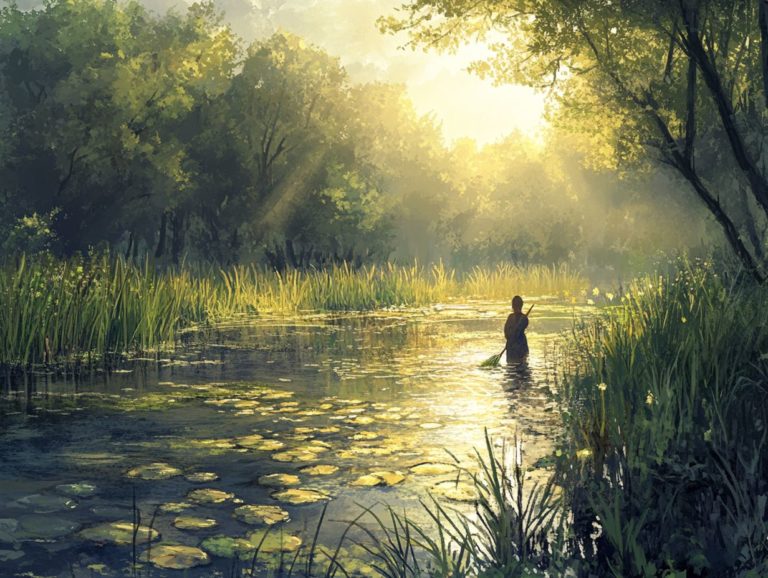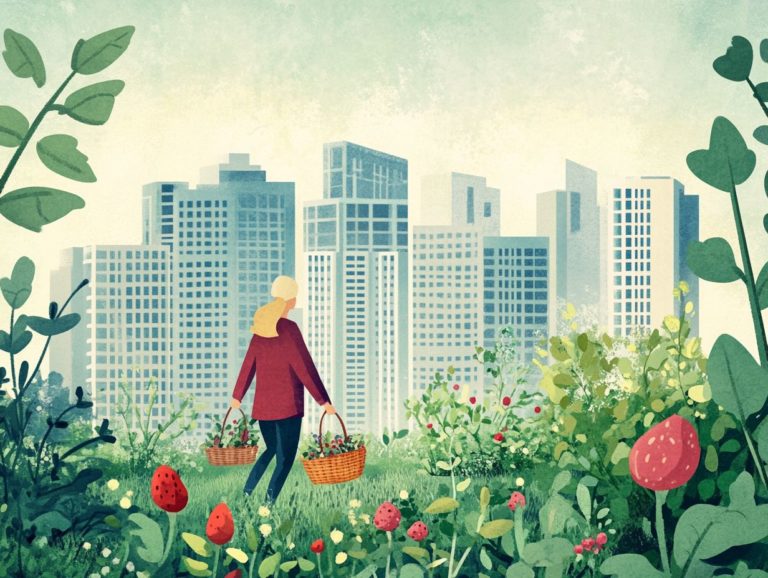How Do I Identify Edible Plants?
Edible plants are more than a culinary delight. They connect you to nature and a sustainable lifestyle.
This guide equips you with essential tips for identifying edible plants. Learn key characteristics and avoid common pitfalls.
Important safety precautions against toxic lookalikes will also be covered, along with delectable recipes that will help you weave these natural treasures into your meals.
Get ready to explore the world of foraging! Discover nature’s hidden treasures today!
Contents
- Key Takeaways:
- What are Edible Plants?
- Identifying Edible Plants
- Dive In!
- Tools for Identifying Edible Plants
- Safety Precautions when Identifying Edible Plants
- Edible Plant Recipes and Uses
- Frequently Asked Questions
- What are edible plants and why is it important to know how to identify them?
- What are some key characteristics to look for when identifying edible plants?
- How can I educate myself on the different types of edible plants?
- Are there any common misconceptions about identifying edible plants?
- What precautions should I take when foraging for edible plants?
- What are some tips for safely identifying edible plants?
Key Takeaways:

- Look for specific characteristics, such as color, smell, and leaf shape to identify edible plants.
- Avoid common mistakes like misidentifying lookalikes; always cross-reference with trusted resources.
- Use field guides and online resources for identification but stay aware of potential dangers.
What are Edible Plants?
Edible plants encompass a remarkable variety of plants that you can enjoy for their nutritional benefits. Wild edible plants offer a sustainable means to enhance your diet, particularly within the lush expanses of North American forests.
Grasping what qualifies as an edible plant is crucial for anyone embarking on the adventure of foraging, whether for survival or culinary discovery. Many individuals turn to experts in edible plants, like those associated with the Missouri Botanical Garden, to guide their foraging endeavors. This helps you forage safely and opens the door to a nutritious banquet that these plants can offer.
Identifying Edible Plants
Identifying edible plants is an essential skill for anyone venturing into foraging or survival situations. Learning how to identify common wild edibles gives you the power to differentiate between nourishing food sources and potentially harmful species, including toxic plants.
It’s vital to become acquainted with recognizable fruits, wild berries like blackberries and raspberries, and tree nuts such as hickory and pine nuts. By doing so, you can cultivate a wholesome feast from nature s bountiful offerings.
Employing strategies like the universal edibility test, a method for determining if a plant is safe to eat, can further enhance your safety while navigating the diverse landscape of wild edible plants. For more insights, check out this guide on how to identify edible plants in spring.
Characteristics to Look For
When you embark on the adventure of identifying edible plants, certain characteristics can significantly aid you in distinguishing between the delicious and the dangerous, transforming your foraging journey into a gourmet experience. For more detailed insights, check out how to spot edible plants in the wild. Key indicators to look for include leaf structure, flower patterns, and even the fragrance of the plant; each of these elements can guide you in determining whether a plant is safe to eat.
Take, for instance, the serrated leaves of a wild raspberry plant; they signal a delightful snack waiting to be picked. Then there are the vibrant yellow flowers of the dandelion, which not only catch the eye but often find their way into salads or teas.
When you observe growth patterns, notice how plants like lamb’s quarters often display a bushy appearance that hints at their edibility. Pay attention to the scent as well; many herbs, such as mint, release an aromatic hint that beckons you to explore its culinary potential.
Check out field guides for more knowledge, such as “Edible Wild Plants: Wild Foods from Dirt to Plate“, or join local foraging groups where you can engage in hands-on learning. This approach will not only enrich your understanding but also make your foraging escapades all the more rewarding.
Dive In!
Unlock the secrets of foraging!
Common Mistakes to Avoid

Foraging for wild edible plants can be immensely rewarding! However, it s essential to navigate the landscape wisely. Beginners often stumble into common pitfalls, which can lead to unfortunate outcomes. To safeguard your foraging adventures, it s crucial to learn what not to eat.
Mistakes may arise from misidentification or a lack of knowledge about toxic lookalikes. Neglecting proper preparation methods can also lead to issues. Seeking guidance from an edible plant expert can provide invaluable insights to enhance your foraging skills and ensure your safety.
One prevalent error is the assumption that all wild plants are safe. This can breed dangeous overconfidence. For instance, a novice might mistakenly identify the edible wild carrot as its toxic cousin, hemlock, leading to dire consequences. Improperly preparing certain plants can lead to stomach problems or allergic reactions.
That s why having a reliable field guide or joining seasoned foragers is essential. Collaborating with knowledgeable individuals enhances your learning experience. It also fosters a sense of community and shared passion for foraging.
Before embarking on your foraging journey, invest time in thorough research. Understand the specific plants in your area and their characteristics including seasonal variations to ensure a safe and enjoyable experience.
Tools for Identifying Edible Plants
Equipping yourself with the right tools is essential for successfully identifying edible plants, whether you find yourself on a casual foraging trip or in a survival scenario.
Field guides, such as those provided by the Missouri Botanical Garden, serve as invaluable resources. They offer detailed images and descriptions to help you learn how to identify edible fruits and distinguish between edible and poisonous species.
Online resources and mobile apps like PlantSnap offer a modern twist to plant identification. They make your foraging experience not only accessible but also enlightening.
Field Guides and Online Resources
Field guides are essential companions on your journey to discovering edible plants. They offer detailed descriptions and vivid illustrations. Online resources, thanks to experts from esteemed institutions like the Missouri Botanical Garden, are transforming how you access this knowledge.
These guides often come packed with tips on foraging, preparation, and what to avoid. They are vital tools for both beginners and seasoned foragers alike. Titles like “The Forager’s Harvest” by Samuel Thayer and “Edible Wild Plants: Wild Foods from Dirt to Plate” by John Kallas truly shine in this area.
Their thorough research and approachable writing styles make them enjoyable reads. As you venture into the world of foraging, tapping into reputable online resources such as foraging websites and expert blogs can significantly elevate your learning experience.
It’s essential to cross-reference information from multiple sources. This ensures you’re getting accurate and safe guidance, as identifying edible plants in your region can be quite the challenge. This practice not only helps confirm the edibility of a plant but also enriches your understanding of local ecosystems.
Safety Precautions when Identifying Edible Plants
Safety precautions are crucial when you’re out identifying edible plants in urban areas. They help prevent the unwelcome ingestion of poisonous lookalikes and ensure a truly rewarding foraging experience.
Before you indulge in any wild edible plant, it’s vital to perform a universal edibility test. To ensure safety, learn how to identify safe wild edibles and familiarize yourself with the traits of toxic species that may resemble their edible counterparts.
Getting to know the local flora intimately can significantly reduce risks. This knowledge will elevate your enjoyment of nature’s bounty.
Poisonous Lookalikes and Other Dangers
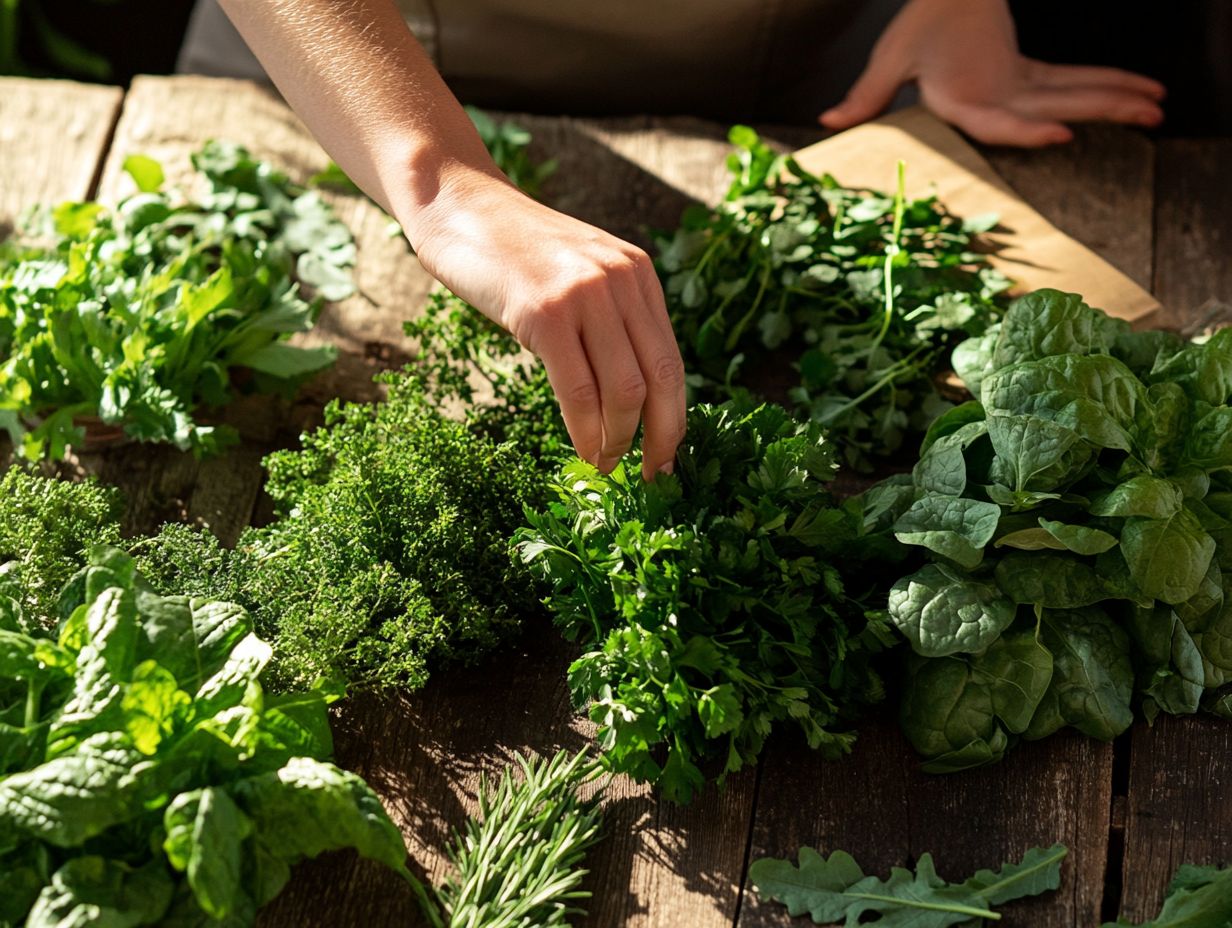
One of the biggest challenges you’ll face while foraging for wild edible plants is the presence of poisonous lookalikes. Learning how to identify invasive vs. edible plants could save your life—don’t take chances! Many plants may appear similar, making it essential to distinguish between them effectively.
Recognizing these dangers is crucial, and it can make your foraging adventures safer and much more enjoyable! For instance, some species of wild garlic can easily be mistaken for the highly toxic lily of the valley, which poses severe cardiac risks. While both plants might share similar leaf shapes, their flowers tell an entirely different tale.
Educating yourself on the unique characteristics of these plants like stem texture and flower structure can make a significant difference. To mitigate risks, consulting with local foraging experts or reliable field guides is wise before you embark on your harvesting adventure.
Gaining knowledge from seasoned foragers not only enhances your safety but also cultivates a deeper appreciation for the rich diversity of nature.
Edible Plant Recipes and Uses
Exploring the realm of edible plants unveils a treasure trove of culinary possibilities. You can discover countless recipes that highlight the rich flavors and nutritional benefits these natural ingredients offer.
Imagine enhancing your desserts with wild berries or transforming tree nuts, like acorns, into savory delights. The versatility of these ingredients allows you to elevate your meals into a nutritious spread.
By mastering the art of preparing and incorporating these plants into your diet, you not only refine your cooking skills but also deepen your appreciation for nature s generous offerings.
How to Prepare and Incorporate Edible Plants into Meals
To truly savor the flavors and health benefits of wild edible plants, it’s essential to master the art of preparation. This can range from straightforward tasks like washing and chopping to more advanced cooking techniques.
Incorporating these plants into your dishes can be simple, such as tossing wild berries into a salad, or elaborate, like crafting a gourmet creation featuring hickory nut pesto. Understanding the unique characteristics of each plant is key to utilizing them well in your kitchen.
For example, certain greens like dandelion or lamb’s quarters can be quickly saut ed with garlic and olive oil for a nutritious side dish. Others, like wild garlic, can lend a delightful punch of flavor to your soups or stews.
Foragers often share stories that highlight the joy of experimenting with wild herbs. You might consider making a refreshing wild mint tea to celebrate the arrival of spring as a traditional technique.
Experts recommend preserving your harvest by dehydrating or creating infused oils. These methods not only extend the shelf life of the plants but also allow you to showcase their delightful flavors throughout the year.
With these practical tips, integrating wild edibles into your everyday cooking becomes a delightful adventure in culinary exploration. Start foraging today and taste the flavors of nature!
Frequently Asked Questions
What are edible plants and why is it important to know how to identify them?
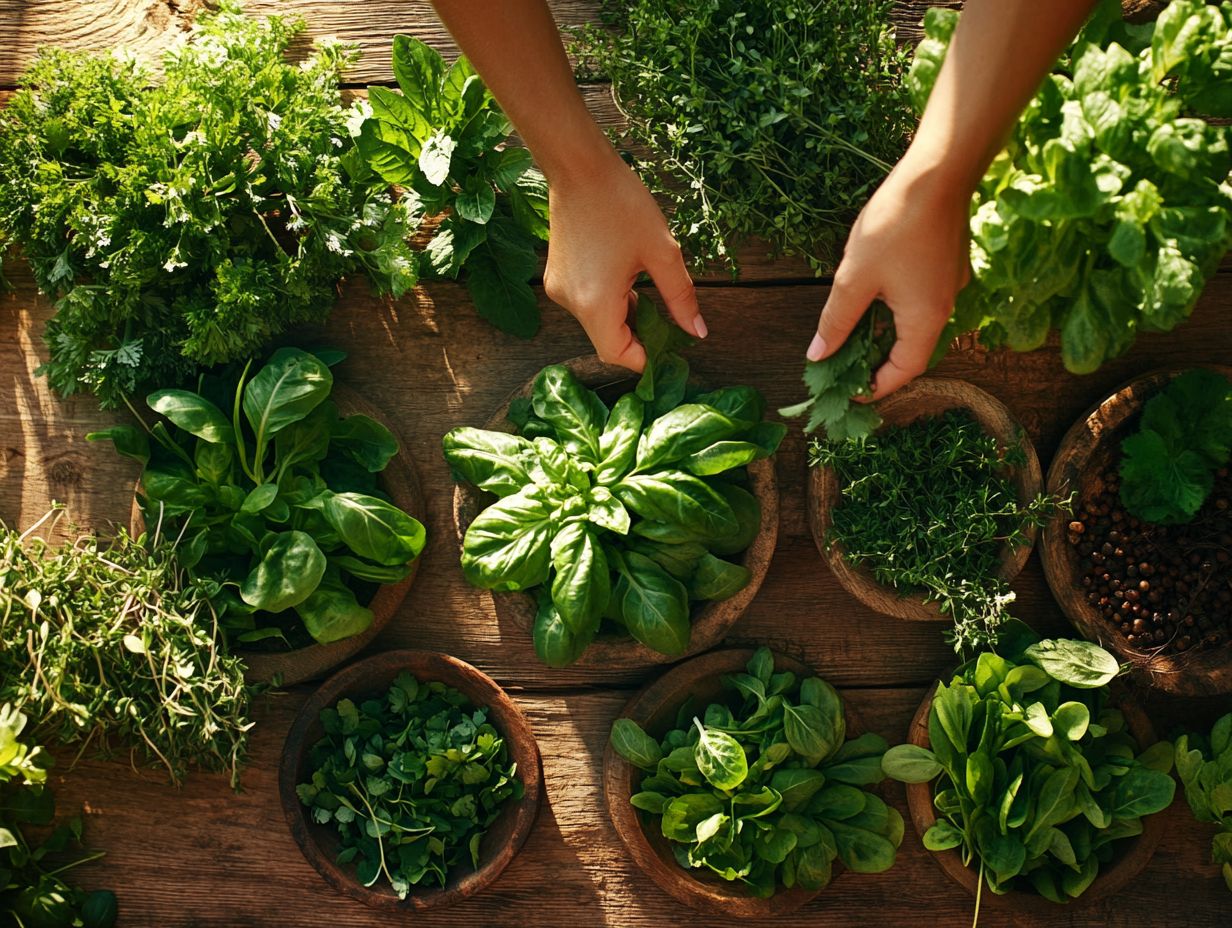
Edible plants are those that can be safely consumed by humans and animals. It is important to know how to distinguish edible from poisonous plants to avoid consuming potentially harmful varieties and to take advantage of the nutritional benefits they offer.
What are some key characteristics to look for when identifying edible plants?
- Shape and color of the leaves
- Presence of berries or fruit
- Smell and taste of the plant
- Location and environment in which the plant is found
How can I educate myself on the different types of edible plants?
Many resources are available for learning about edible plants. Field guides, online databases, and local foraging groups can be very helpful.
Use multiple sources. Always talk to someone who knows about plants before consuming any wild plant.
Are there any common misconceptions about identifying edible plants?
A big misconception is that all wild plants are safe to eat. Many poisonous plants look like edible ones.
Make sure you correctly identify a plant before consuming it.
What precautions should I take when foraging for edible plants?
When foraging, wear appropriate clothing and sturdy shoes. It s wise to use gloves and avoid areas that might be contaminated, like roadsides or places treated with pesticides.
Always wash and cook wild plants before eating them to ensure safety.
What are some tips for safely identifying edible plants?
Start slow and only eat small amounts at first. Identify the plant using several resources.
Never eat a plant if you’re unsure of what it is. Keep a record of the plants you’ve identified and tried.

